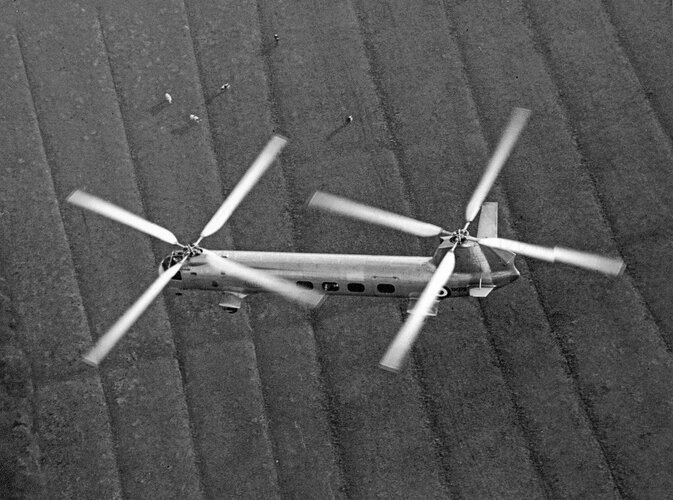GT6Boy
I really should change my personal text
- Joined
- 3 November 2017
- Messages
- 55
- Reaction score
- 185
Good afternoon folks- I'm trying to establish when and where, the Bristol 173 carried out service trials; might anyone be able to assist?
It is well documented in the written form and online(uh oh. ..) that the 173 mk1 under the Service registration XH379 carried out trials on HMS Eagle in late November 1953.
It is either implied or mentioned as fact that 'the 173' then carried out further trials with the RN and indeed, trials with the RAF.
I cannot however, find detail of the kind evident from the HMS Eagle trials, that either the 2nd RN or RAF trials actually took place?
Are the 2nd RN and RAF trials apocryphal?
For those interested- I've put together my understanding of a Spotters Guide to 173 timeline identification. I've only attempted this as a lot of the on-line and even written sources are inaccurate regarding dating the aircraft depicted
The 173 mk1 initial flights were made without doors etc. and no oleo balance pipe hoops above the unfaired undercarriage sponson struts.
The 173 mk2 was never fitted with undercarriage sponson struts.
Both the 173 mk1 (G-ALBN/XF785) and the 173 mk2 (G-AMJI/XH379) were initially displayed, post 1st flights, in painted form:
The 173 mk1 in white over silver with Blue cheat line.
The 173 mk2 in the 1st of 2 BEA schemes(with winglets briefly)
Thereafter, for a period of time, they both operated in natural metal finish, with service markings and there are photos of the 2 in-flight together( a date would be great to know).
I presume it was at this stage that one or other of the airframes would have been involved in the trials under question. ..
The 173 mk2 was fitted with the new 4 bladed rotors on 11/02/55, still in natural finish.
The 173 mk2 was painted in a different BEA paint scheme for trials with the airline in July 1956- seemingly initially with the conventional Dihedral tailplane.
The 173 mk2 crashed at Filton families day on September 16th 1956.
The 173 mk1 then received the trial flat tailplane at that time fitted to the crashed 173 mk2 and was then painted in a new scheme of white over silver with red cheat line, by the end of September 1956. The same scheme it still wears.
There are many examples of photographs being misrepresented- the 173 mk2 taken from above is a Bristol Aeroplane Official photograph that is printed to the rear: Bristol 192 Belvedere!
The Aeroplane illustrative cover shows the 173 mk2 overflying HMS Eagle, when in fact it was the 173 mk1 which carried out the November 1953 trials on HMS Eagle.

It is well documented in the written form and online(uh oh. ..) that the 173 mk1 under the Service registration XH379 carried out trials on HMS Eagle in late November 1953.
It is either implied or mentioned as fact that 'the 173' then carried out further trials with the RN and indeed, trials with the RAF.
I cannot however, find detail of the kind evident from the HMS Eagle trials, that either the 2nd RN or RAF trials actually took place?
Are the 2nd RN and RAF trials apocryphal?
For those interested- I've put together my understanding of a Spotters Guide to 173 timeline identification. I've only attempted this as a lot of the on-line and even written sources are inaccurate regarding dating the aircraft depicted
The 173 mk1 initial flights were made without doors etc. and no oleo balance pipe hoops above the unfaired undercarriage sponson struts.
The 173 mk2 was never fitted with undercarriage sponson struts.
Both the 173 mk1 (G-ALBN/XF785) and the 173 mk2 (G-AMJI/XH379) were initially displayed, post 1st flights, in painted form:
The 173 mk1 in white over silver with Blue cheat line.
The 173 mk2 in the 1st of 2 BEA schemes(with winglets briefly)
Thereafter, for a period of time, they both operated in natural metal finish, with service markings and there are photos of the 2 in-flight together( a date would be great to know).
I presume it was at this stage that one or other of the airframes would have been involved in the trials under question. ..
The 173 mk2 was fitted with the new 4 bladed rotors on 11/02/55, still in natural finish.
The 173 mk2 was painted in a different BEA paint scheme for trials with the airline in July 1956- seemingly initially with the conventional Dihedral tailplane.
The 173 mk2 crashed at Filton families day on September 16th 1956.
The 173 mk1 then received the trial flat tailplane at that time fitted to the crashed 173 mk2 and was then painted in a new scheme of white over silver with red cheat line, by the end of September 1956. The same scheme it still wears.
There are many examples of photographs being misrepresented- the 173 mk2 taken from above is a Bristol Aeroplane Official photograph that is printed to the rear: Bristol 192 Belvedere!
The Aeroplane illustrative cover shows the 173 mk2 overflying HMS Eagle, when in fact it was the 173 mk1 which carried out the November 1953 trials on HMS Eagle.









